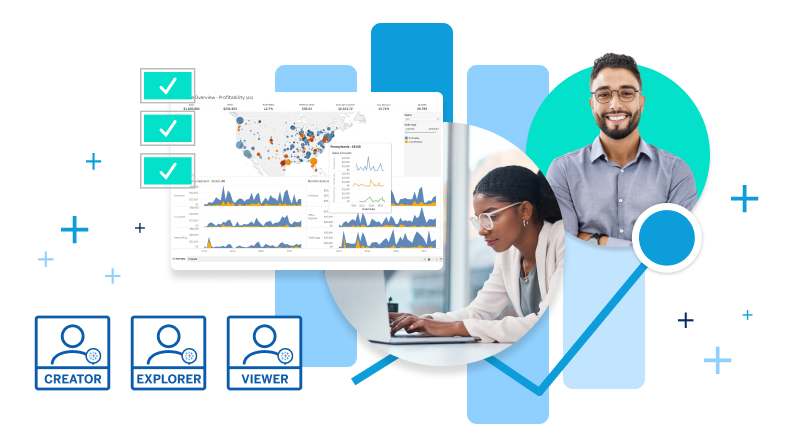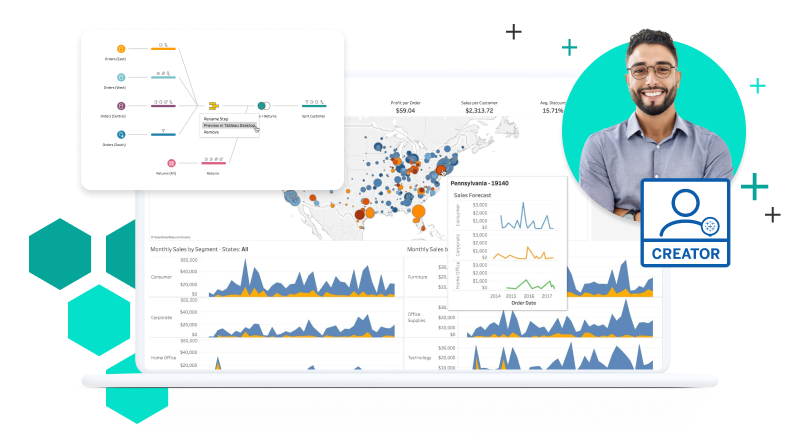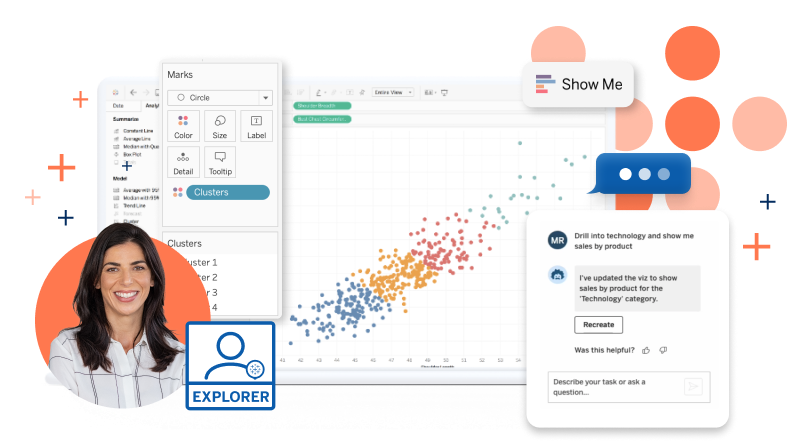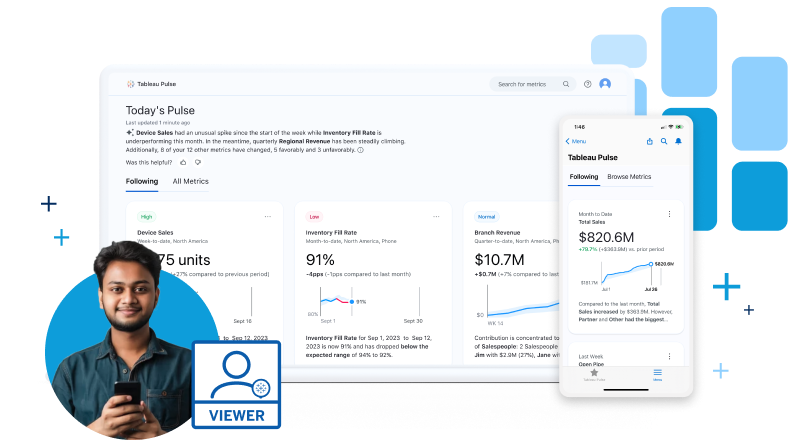
Tableau License Types
Explore the descriptions below to find the right licenses for your users. Then use our Pricing Calculator to price what you need, send a shopping cart to yourself, or share it with others in your organization.
License Types
It’s easy to choose the right mix of Tableau licenses. Tableau has three different license types. Each type is tailored to a category of jobs and their data needs. And because every team is unique, you can choose the type and quantity of licenses that match your budget and serve your company’s specific data needs.

Tableau Creator License
Start with a Tableau Creator license.
Your organization needs at least one Creator license to create a new deployment and start using Tableau.
- Creators are analysts, data scientists, IT professionals, or someone who analyzes data and manages data environments.
- Creators conduct deep data prep and analysis or create content with data for themselves or others.
- A Creator license allows you to prepare data and data sources, perform analysis, and share data sources, visualizations, and dashboards across your company.

Tableau Explorer License
Explorers are business users that use data sources built by others to create visualizations and dashboards.
- Explorers want to ask and answer their own questions with data, even though they may not have analyst in their title.
- An Explorer license allows you to answer questions not addressed in initial reporting by modifying visualizations and dashboards.

Tableau Viewer License
Viewers need data to inform their work and provide insights, but don’t need or have time to conduct their own analysis.
- Viewers make data-driven decisions that leverage your organization’s analytics, including dashboards and Pulse metrics built by others.
- Viewer licenses help you scale analytics across your organization, putting data into your users’ flow of work.